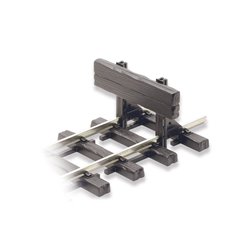Introducing the most useful piece of kit that any modeller could have in their toolbox. It is called a helping hand...
No products
Product successfully added to your shopping cart
There are 0 items in your cart. There is 1 item in your cart.
Search Tips
What is G scale?
G scale refers to a popular scale for outdoor and indoor garden railways. It is one of the larger scales used in model railways with a scale of 1:22.5 or 1:24, depending on the specific product line.
In G scale, the models are designed to be sturdy and weather-resistant, making them suitable for outdoor use in gardens or public displays. The large scale allows for intricate detailing and the ability to incorporate features like working lights and sound systems.
While most people assume the "G" refers to "Garden", the term "G scale" is really derived from the German word "groß," which means "large" or "big." This scale was initially developed in the 1960s by the German company Lehmann Groß Bahn (LGB) and was later popularised by other manufacturers such as Bachmann and Aristocraft.
In the UK, G scale has gained popularity among enthusiasts who enjoy building and operating garden railways, as well as those who prefer larger scales for indoor layouts. Many modellers appreciate the level of detail and the ability to incorporate realistic landscaping and structures in their G scale setups.
It's important to note that while G scale is primarily intended for outdoor use, it can also be used for indoor layouts, provided there is sufficient space to accommodate the larger models and track radius requirements. A shelf close to the ceiling is a great starting point!
Click here to receive the tips weekly in your mailbox. You can unsubscribe at any time.










